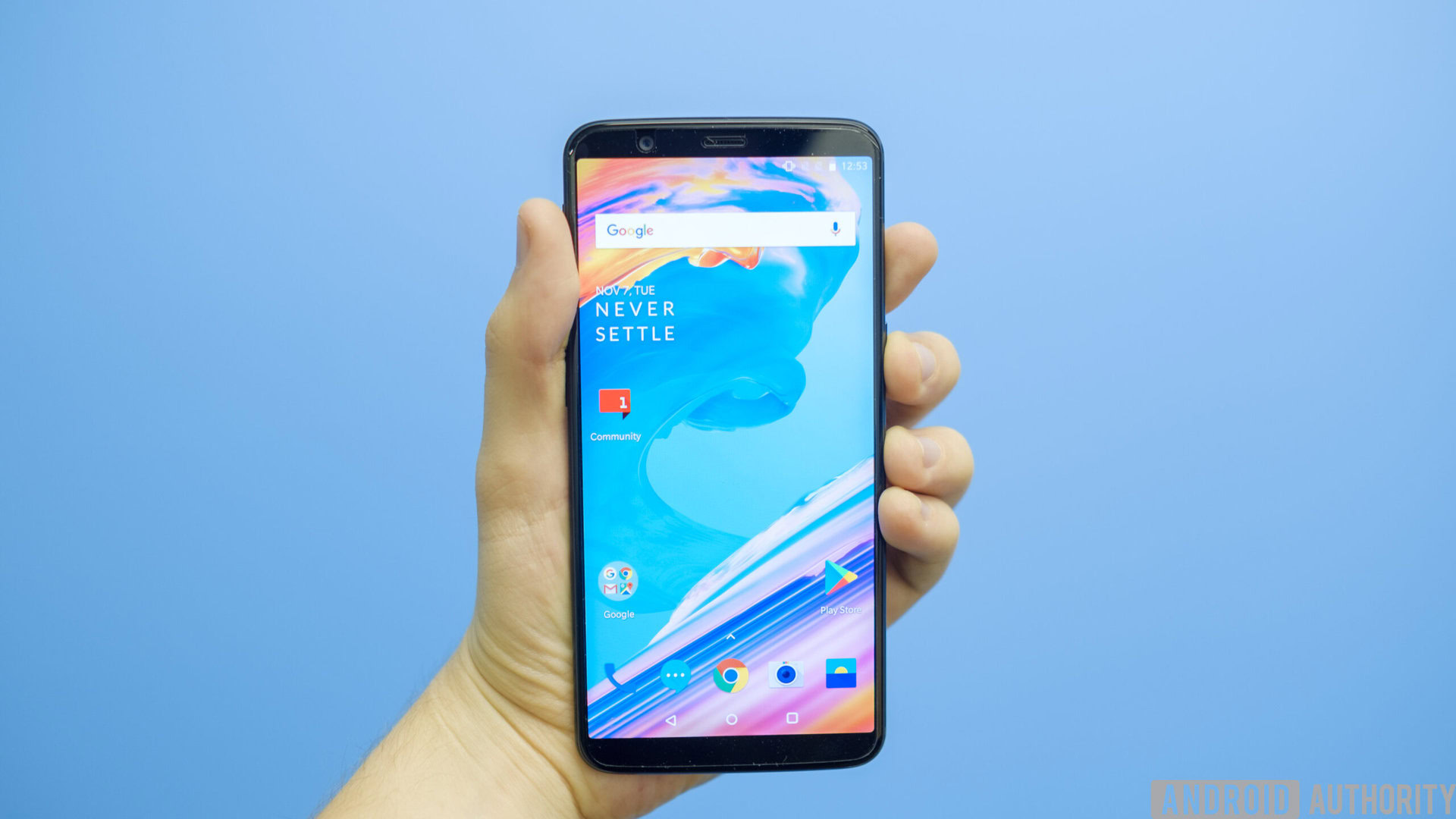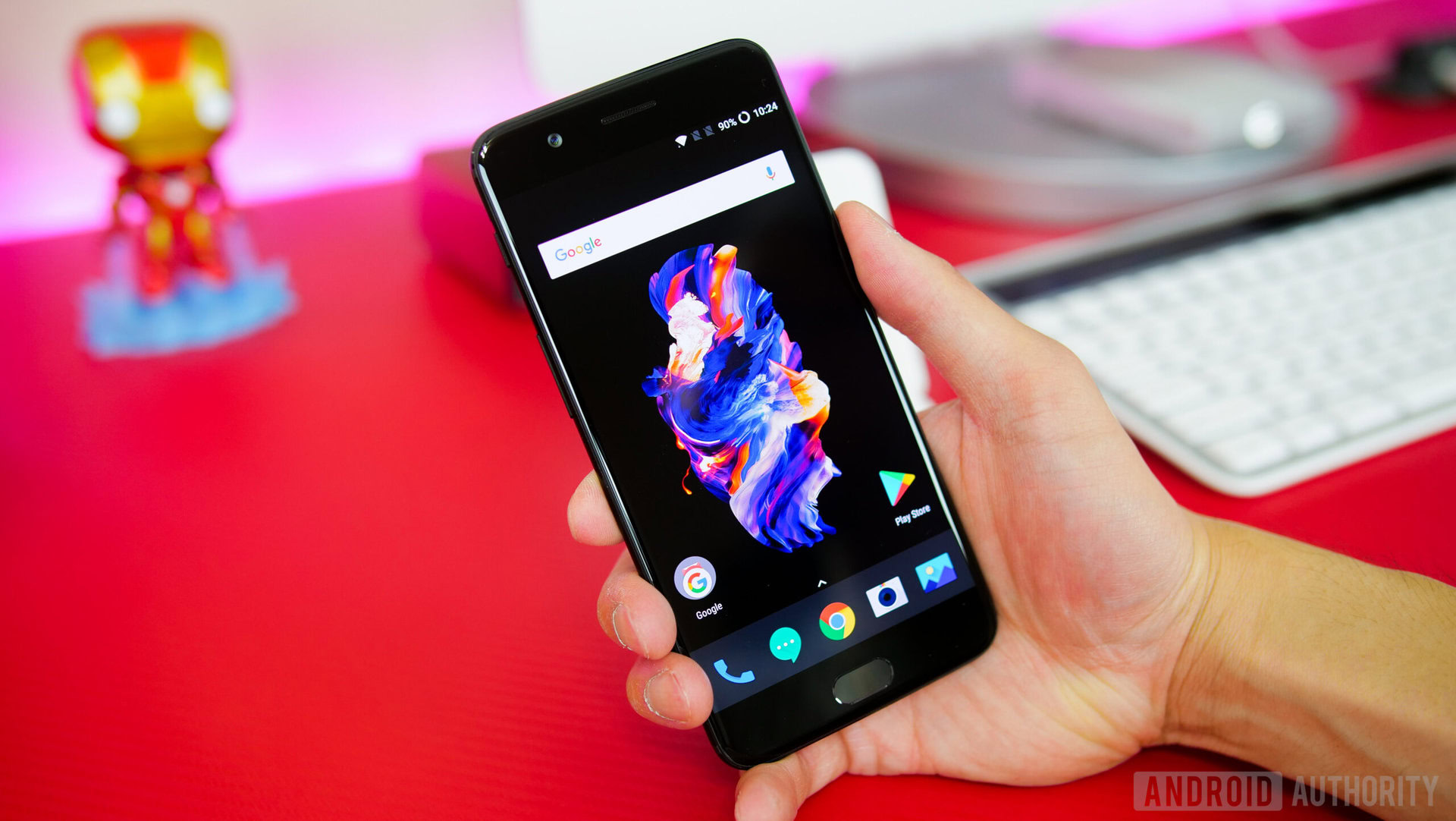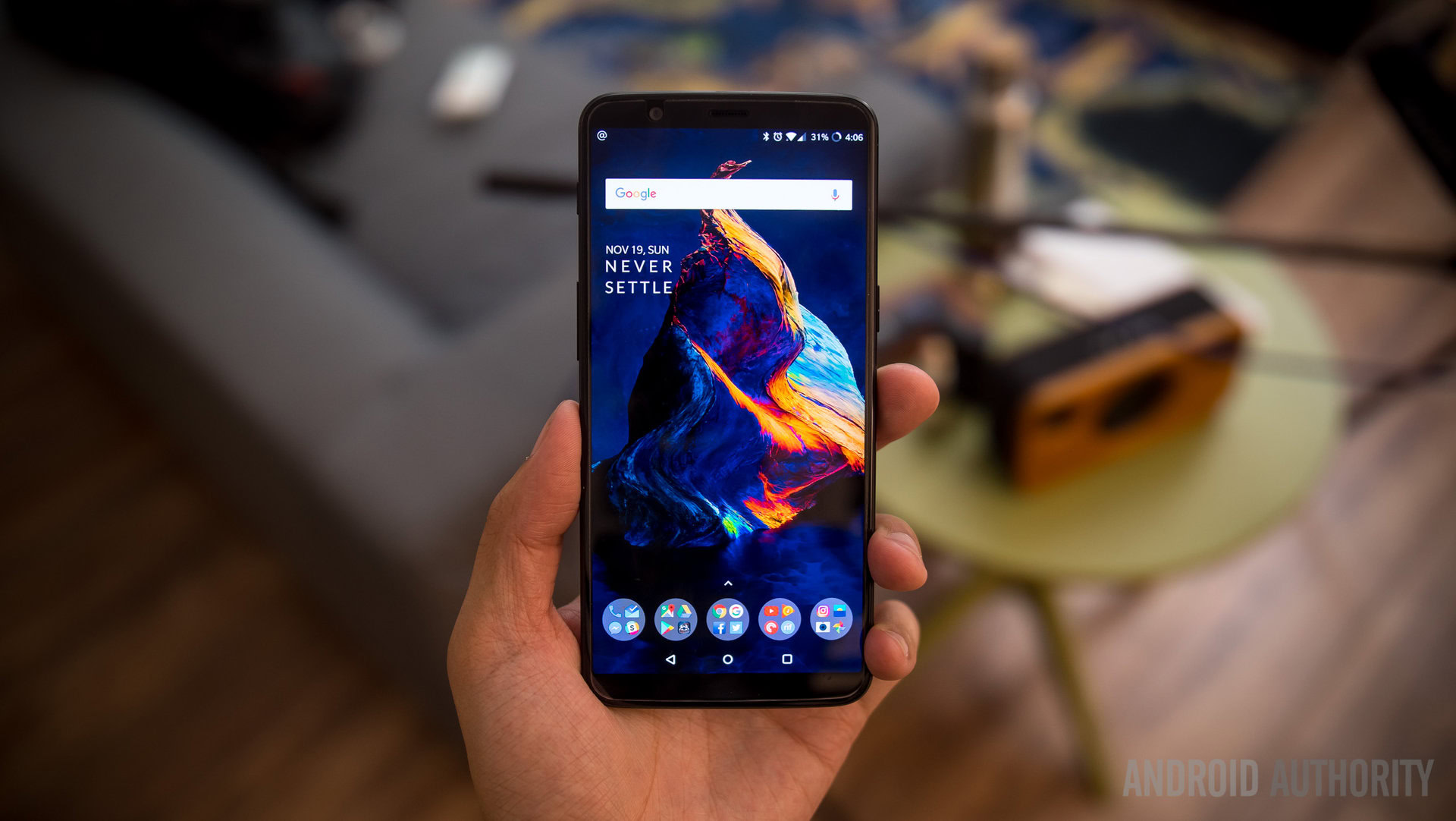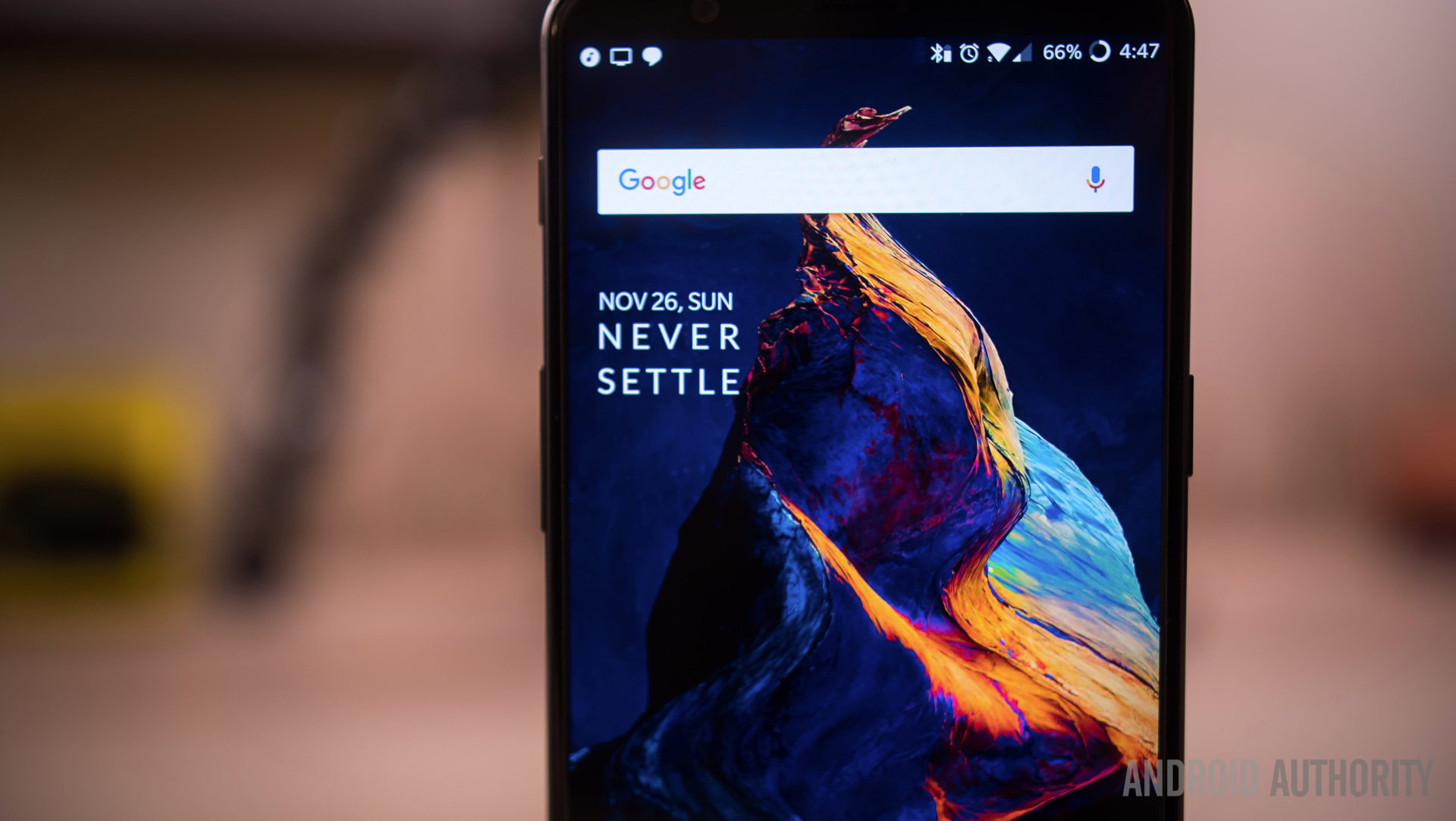Affiliate links on Android Authority may earn us a commission. Learn more.
OnePlus in 2018: Will it finally settle?
Published onJanuary 3, 2018

It’s been an exciting year for OnePlus. We’ve been treated to not one, but two very appealing handsets. The company rose to new heights in the competitive Indian market. It still may not have anything close to the market share of the leaders, but the company’s appeal seems as strong as ever— particularly among the Android enthusiast crowd.
This year’s OnePlus 5 and 5T launches packed in everything we’ve come to expect from the brand. A powerful processing package, plenty of memory, and a pretty nice looking design— all for about half the price of flagships from Samsung or Apple. The OnePlus 5 even attempted to reach into the higher-end camera market, with a telephoto lens for optical zoom. The feature was dropped with the OnePlus 5T due its lack of any real benefit, but there’s clearly still ambition within the company to push features and price to the limit.
The OnePlus 5 and 5T offer exceptional value for money, but have suffered with a few hardware & software issues.
2017 appears to have been a sales success for the company, although profits are still kept a tightly guarded secret. The OnePlus 5T was the company’s fastest selling handset, following a launch week sales record for the OnePlus 5 over at Amazon India. In fact, the company is now the fastest growing smartphone brand in India, doubling its market share in Q3 2017 and accounting for 28 percent of the premium handset market in the country.
OnePlus may barely register on the global sales ticker, but three years of dedicated focus in the Indian market is beginning to pay off. The company is winning the battles it’s choosing to fight.

Another year of controversy
Of course, it wouldn’t be OnePlus without controversies too. The OnePlus 5 caught a fair bit of flack for its obvious use of OPPO’s R11 design. It’s not great, but hardly surprising, that resources are shared between parent and subsidiary companies, especially given OnePlus’ small size and limited resources.
Unfortunately that wasn’t the worst of the handset’s problems. Some users reported seeing a wobbling “jelly” effect when scrolling up and down the OnePlus 5’s screen. It turned out the display was mounted upside down, perhaps due to a limited amount of space inside the handset for components like cameras.
We’re not done yet. The very same phone was accused of cheating benchmarks. Again. The phone boosted clock speeds when testing certain applications, achieving levels of performance that might not be available otherwise. Although OnePlus stated it used a similar level of performance boosting when opening apps.

Fortunately the OnePlus 5T didn’t suffer from the same issues, and came with an updated design that’s more in keeping with cutting edge “bezel-less” designs. It had problems of its own though, like a lack of support for HD playback from some streaming services and no support for Project Treble in its Oreo update.
The handset’s higher price tag was arguably an even more contentious issue. The original cutthroat $300 launch price of the company’s first handset has now reached $500. It’s still a lot cheaper than rival flagship phones, but fans are starting to wonder if the company’s “Never Settle” ethos is reaching its limits.

Where to in 2018?
The OnePlus One is now three and a half years old, the company itself has just turned four. As much as the company has grown, its spirit, and its mistakes, still feel very much the same. There’s still clearly work to be done to build brand perception. Issues like excessive user data collection won’t help the company branch out into a wider market. General consumers aren’t as forgiving as fans.
OnePlus’ small size and low prices are arguably even bigger barriers to its continued success. Without carrier support or store presence, the global brand is mostly limited to online retail though third parties like Amazon and lacks a major advertising budget, resulting in smaller reach than many of its rivals. This very approach helped the company keep tight control on its stock and its prices low, but it may hold OnePlus back in 2018.
OnePlus may barely register on the global sales ticker, but it's winning the battles it's choosing to fight.
Co-founder Carl Pei stated the company is committed to improving its share of its current markets before moving to new areas like South America, so 2018 is unlikely to see any new major ventures. Pei also ruled out a mid-tier smartphone until the company is one of the global leaders in the flagship space, so we’re probably looking at solely flagship models over the next 12 months or more.
Wrap Up
OnePlus’ 2017 will feel quite familiar to the brand’s followers. It’s kicked up more than its fair share of controversies, but that’s bound to happen with a company as vocal as OnePlus. The company is one of only a few building a community around its products, and fans of the brand wouldn’t have it any other way.
OnePlus continues to offer handsets of exceptional value. It’s gradually refining its business approach, and making further strides in India, but has yet to knock any of the big players off their perch. If handset prices continue to creep up, 2018 is going to present the biggest challenge yes to OnePlus’ identity and its “Never Settle” ethos.
OnePlus full coverage:
- OnePlus 6 vs Apple iPhone X: can David take on Goliath?
- OnePlus 6 vs OnePlus 5T: The state of never settling
- OnePlus 6 color comparison: midnight black, mirror black, and silk white
- OnePlus 6 Android P Developer Preview beta 2 lands with Google Lens support
- OnePlus 6: What’s great, what’s missing
- OnePlus Bullets wireless headphones with fast charging and magnetic controls